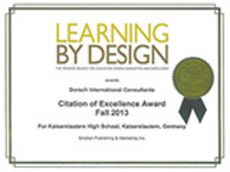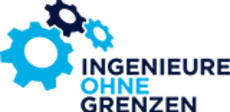
Environment:
The gentle use of natural resources
The gentle use of natural resources, is today more important than ever before.
We constantly improve our mobility concept.
We plan proactively and sustainably. Our engagement speaks for itself.
We generally aim for long-term goals in our sustainability management.
Dealing with resources
Preserving the basis of life is a joint responsibility of our Group. We accept this responsibility because environmental protection is also the top priority in our projects. We are convinced that only by treating the environment with respect and care can we meet our long-term social responsibility.
The positive development of our key figures in environmental sustainability confirms us in our actions.
We have already successfully implemented the following measures in the past:
- More environmentally friendly office materials (e.g., use of FSC-certified paper with Ecolabel and recycled paper or sensible savings in paper use)
- Continuous optimization of the procurement process (e.g., ongoing assessment of the sustainability activities of potential suppliers, more sustainable advertising materials)
- Systematic energy and environmental accounting (based on EMAS standard)
- Increased use of more sustainable cloud solutions
- 100% green electricity at our sites


Mobility
In the area of mobility, we see it as our goal to reduce our emissions and at the same time reduce our consumption of primary energy. We are succeeding in continuously improving our mobility management by:
- Significantly reducing business travel through online meetings.
- Lowering CO2 emissions by reducing individual mobility through flexible home office arrangements
- Utilization of external consulting in mobility
- Examination of contemporary mobility concepts
Sustainable thinking and acting
Our initiatives are forward-looking and sustainably focused:
- Our "sustainable planning" is confirmed by awards such as the "Learning by Design" award
- As a sustaining member we support the association "Engineers without Borders".
- Transparency, authenticity and openness are part of our self-image and thus our corporate identity
Key ecological objectives, indicators & facts
Due to the long-term nature of our projects and the associated high volatility in the independent consulting engineers sector, we generally aim for long-term goals in our sustainability management. We also develop our measures accordingly. Our core objectives communicated herewith (as of the reporting date 31.12.2022) are based on the year 2019 with a target horizon until 2025.
After this positive target settlement until 2025, the targets were now to be redefined. Due to the the far-reaching planning horizons in our sector, long-term targeting has proven to be the best approach. Subsequently our new objectives are set up until 2025 based on the pre-Covid19 year 2019 figures as stated below.
Use of Resources
In 2019 the primary energy consumption at Dorsch International per full-time equivalent employee (FTE) was 9.11 MWh per annum. By 2022 consumption per FTE was down to 4.96 MWh* per annum, representing a significant reduction in primary energy consumption of -46 %* within three years.
This result exceeds the original 2025 target of a 30% reduction in energy consumption compared to 2019. However, after the already expected increase in energy consumption from 2021 to 2022 by 25.6% due to the Corona one-off effects, a further increase in energy consumption is expected for the post-Corona year 2023, which is why the original long-term reduction targets until 2025 are still maintained for the time being.
This includes a 1.41 MWh electrical energy consumption in 2019 per FTE and 1.20 MWh* per FTE in 2022, representing a huge reduction of -15 %* per FTE.
Paper consumption per FTE decreased sharply in 2022 by 28 %* or -5.14 kg* compared with the peak year of 2019. The consumption of printer paper and plotter paper per FTE was 18.29 kg in 2019, and 13.15 kg* in 2022, mainly due to expected corona effects.
The amount of waste per FTE has increased again to 42.41 kg (2022) after a significant decrease since 2015 to 40.93 kg (2019), a slight increase of 3.6%.
Mobility
At 5,9 MWh per FTE in 2019 the energy consumption levels for mobility at Dorsch International were substantially higher than in 2022 when levels showed just 1.54 MWh*. This was achieved primarily through a significant reduction in business trips and increased work in the home office. The overall result was a -74 %* reduction for mobility alone. However, further increases are expected in 2023 compared to the previous year, which is why the long-term target definition for 2025 has not yet been adjusted.
Particulate emissions per FTE also dropped from 0.11 kg in 2019 to 0.02 kg* in 2022, this also representing a decrease of -82%*.
CO2 Emissions
CO2 emissions per FTE in 2019 were 2.02 t compared with 0.86 t* in 2022, representing a decrease of -57 %* over a period of three years.
We have far exceeded our original target of reducing CO2 emissions by 20% from 2019 to 2025. However, there is an expected increase of 17.8% of CO2 emissions per FTE in 2022 compared to the previous year. A target adjustment will therefore not be examined until the results for 2023 are available, in order to exclude the corona effects here as well.


* The uncharacteristically high reduction in energy consumption and CO2 emissions in the years 2020 and 2021 is caused mainly due to the one-time effects of the Corona crisis. Our long-term goals are thus already exceeded. But it is expected that these figures will rise noticeably again in 2023, as in 2022. It is assumed that the figures will still remain on a significantly lower level than in 2015, still meeting our long-time targets.
Definition of our objectives
After a positive target settlement 2015 to 2021, our goals had to be redefined. Due to the far-reaching planning horizons in our sector, long-term target setting has proven to be the best approach.
We have chosen the pre-Covid19 year 2019 as the base year for our current objectives in order to exclude pandemic-related influences. Our targets up to 2025 are shown below, based on the 2019 figures.
Objectives and Key Figures until 2025
Base year 2019, without Covid19-related effects



